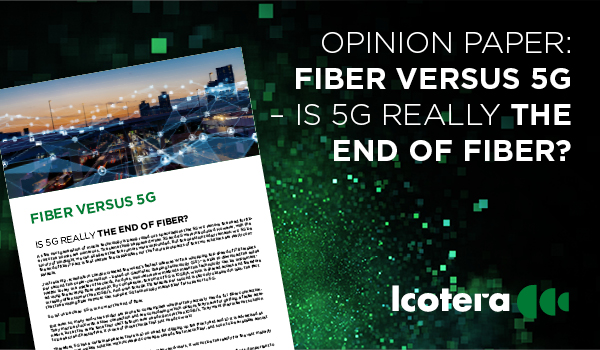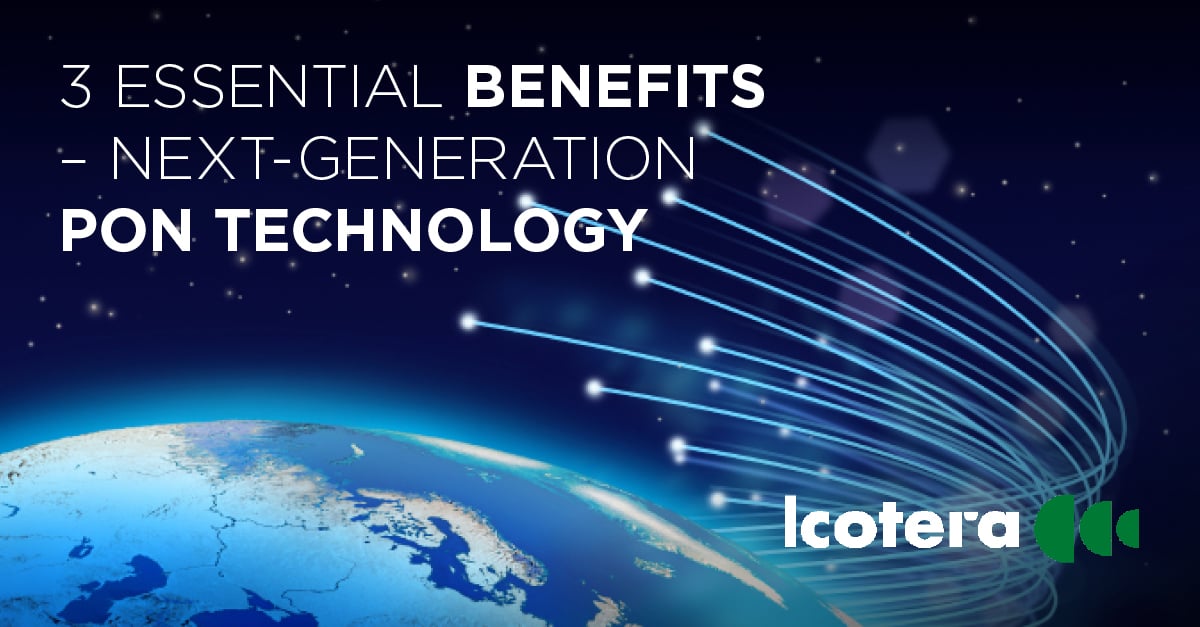The next generation of passive optical network (PON) technology is upon us. And it won't be long before consumers can stream HD content and businesses can optimize their resources faster than you can shout, "Beyond gigabit performance!"
The telecoms industry does not stand still for long. Over the last couple of years, we've seen exponential growth in terms of demand for ever-higher ethernet standards. Part of the reason is that we surround ourselves with smartphones, tablets, computers and other devices and gadgets that require a high-speed internet connection, if not constantly, then at least on a daily basis.
Another reason lies in the fact that both network operators and internet service providers (ISPs) are constantly looking for new ways to reduce their total cost of ownership (TCO) while simultaneously providing their customers with even faster internet speeds.
Let's take a look at next-generation PON technology and how it is going to take internet performance as we know it today to the next level.
--------------------------------------------------------------------------------
PON technology in short
A passive optical network (PON), is a fiberoptic technology that delivers broadband network access to end-customers. It all started with APON (155 Mbps) back in the late 90s, Quickly hereafter came BPON (622 Mbps), EPON (1,25 Gbps) which has led to the today commonly used GPON, supporting 2,5 Gbps downstream. Since most active equipment could only support 1 Gbps on the LAN side, 1 Gbps was the maximum bandwidth possible. With the new 2.5 Gbps standard on the LAN side, the 1 Gbps limit was finally broken, but the giant leap forward comes with the shift to next-gen PON, which supports not just 10 Gbps, or 40 Gbps, but up to 100 Gbps.
--------------------------------------------------------------------------------
What is next-generation PON technology?
Next-generation PON technology is the term for ultra-high-speed internet capable of running on existing fiber infrastructure. The next-gen technology can provide more than 10 Gbps throughput to consumers – over just one wavelength. We're talking faster internet connectivity than ever before, and available to every subscriber.
– Consumers will demand high-speed internet as an integral part of their everyday lives, and they'll expect lag-free gaming and streaming of HD content, with downloads and other online tasks requiring no more than a few seconds, Johan Westerberg, VP Sales Nordic at Icotera, explains.
The next generation of PON technology is based on the same fiberoptic infrastructure that we use for PON today. That's the advantage of using next-gen technologies like XGS-PON, NG-PON2 or 100G-EPON – they are designed to co-exist with current PON technologies on the same physical fiber architecture.
Ultimately, this means that the same fiber infrastructure currently in use can supply both private subscribers (whose bandwidth needs are generally limited) and enterprise customers (who tend to have much higher bandwidth needs).
But how is it going to improve our internet experience? Well, there are three essential benefits:
1. Future-proof solution
The first – and most important – benefit of next-generation PON technology is that the fiberoptic technology is a future-proof solution – the same architecture can be used for legacy GPON as well as advanced XGS-PON.
The lifetime of an optical fiber is expected to be 30-40 years, which means that we will see several technological shifts on the same architecture during this period. Already we've seen EPON give way to GPON, and now GPON is making way for XGS-PON – and that's just during the past 10 years.
2. Increased performance
Higher speed is the second great benefit of the next generation of PON technology. Compared to old-fashioned twisted-pair copper lines, or even coaxial cable, optic fiber has the ability to provide greater bandwidth and greater reliability than ever before. Copper and coax are limited to approximately 1 Gbps, so even private subscribers will soon face a bottleneck – especially when we start seeing in-home Wi-Fi solutions that exceed 1 Gbps.
– With next-generation PON technology, the consumer will no longer have to settle for slow internet performance. This is a huge selling point for the ISP, because they can finally say goodbye to the "up to 10 Gbps" marketing statement and instead deliver the speed that is actually requested – and paid for – by the customer, Johan Westerberg says, and adds:
– One of the main obstacles for switching from legacy GPON technology to XGS-PON, for example, has been the cost of equipment. The XGS-PON technology itself is technically matured and standardized, but we have not yet seen any economy of scale due to low volumes in the market. But as more and more network operators make the switch, having come to realize that PON architecture will save them money in the long run, the price is expected to adjust to a more reasonable level.
3. No limits
Limitless bandwidth is a benefit that is hard to overlook due to the great improvement end-users will experience. According to Johan Westerberg, it's all about the freedom of choice:
– We have become so dependent on the internet that slower speeds are simply regarded as unacceptable by the end-users. With next-generation PON technology, however, technological limitations are a thing of the past – both network operators and ISPs can offer limitless bandwidth. In other words, only the end-user sets the limit.
The most important benefit of next-generation technology like XGS-PON is that it can co-exist with current GPON installations, which essentially means that, instead of having to upgrade all users in an area, a network provider can selectively upgrade those users requiring faster speeds, such as enterprise customers.
There's no doubt that digital transformation is having a huge impact on the internet industry.
Are you interested in knowing more about how you can grow your business with fiber-to-the-home (FTTH)?
We are more than happy to meet with you for a personal or virtual chat. Simply reach out to Johan Westerberg, VP Sales Nordics at Icotera, on +46 (0)79 347 15 3000 or at mail: jwe@icotera.com
You might also want to checkout our webinars to stay updated on the FTTH industry - find our webinars here.
--------------------------------------------------------------------------------
Delivering on your customer promise is key!
While the demand for high-speed internet is constantly growing, many network operators are struggling – not only to compete for tomorrow's share of the market, but also to deliver on their current customer promise of 1G throughput.
Click to read more in this blog post
--------------------------------------------------------------------------------
WANT TO KNOW MORE about why the issue of 5G and fiber isn’t a question of either/or?
Download our opinion paper Fiber versus 5G - is 5G really the end of fiber here



